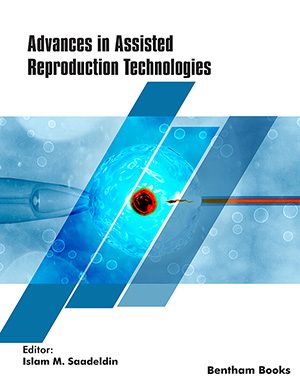Abstract
Background: Recent studies have validated the role of Pericentriolar Material 1 (PCM1) in several malignant tumour cell lines, but its specific biological function in lung adenocarcinoma (LUAD) remains unclear.
Objective: To address this gap, this study analyzed 411 LUAD and control samples to evaluate the prognostic value of PCM1 using Cox regression analysis.
Methods: Multiple genes co-expressed with PCM1 were also analyzed to investigate the biological processes and roles involved in PCM1. An endogenous competitive network with PCM1 as the key gene was constructed to uncover its regulatory and competitive relationships in LUAD. The study further explored the immunological characteristics of PCM1 in different expression groups based on immune infiltration analysis.
Results: These findings indicated that higher PCM1 expression levels were associated with better survival prognoses, possibly due to its antagonistic effects on RHOC. Immunological infiltration analysis revealed a significant correlation between PCM1 and various immune cell infiltration levels, including CD4+ T cells, naïve B cells, M2 macrophages, and mast cells. However, there was no significant relationship between PCM1 and MSI, TMB, or stemness, although it was positively correlated with m6A genes. Patients with lower PCM1 expression responded better to CTLA-4 therapy. The study also estimated that some chemotherapeutic and targeted agents might be effective in treating patients with high PCM1 levels. PCM1 was mainly expressed in the cytoplasmic and membranous structures.
Conclusion: PCM1 shows potential as a prognostic biomarker for LUAD due to its strong correlation with immune cell infiltration and its ability to enhance anticancer treatment sensitivity.
Keywords: PCM1, lung adenocarcinoma, bioinformatics, potential biomarker, personalized medicine, LUAD.
[http://dx.doi.org/10.1097/JTO.0000000000000319] [PMID: 25170645]
[http://dx.doi.org/10.1126/sciadv.ade5393] [PMID: 36763655]
[PMID: 31751222]
[http://dx.doi.org/10.1200/JCO.2012.46.9270] [PMID: 23401443]
[http://dx.doi.org/10.3322/caac.21442] [PMID: 29313949]
[http://dx.doi.org/10.3322/caac.21492] [PMID: 30207593]
[http://dx.doi.org/10.1155/2020/8153295]
[http://dx.doi.org/10.7150/jca.84567] [PMID: 37497407]
[http://dx.doi.org/10.1097/JTO.0000000000000630] [PMID: 26291008]
[http://dx.doi.org/10.3322/caac.21708] [PMID: 35020204]
[http://dx.doi.org/10.1016/j.intimp.2019.106077]
[http://dx.doi.org/10.3390/cancers14071759] [PMID: 35406531]
[http://dx.doi.org/10.1016/S1470-2045(12)70087-6] [PMID: 22452896]
[http://dx.doi.org/10.1126/scitranslmed.aao2301] [PMID: 29925635]
[http://dx.doi.org/10.1056/NEJMoa1606774] [PMID: 27718847]
[http://dx.doi.org/10.1056/NEJMoa1200690] [PMID: 22658127]
[http://dx.doi.org/10.1186/s12957-022-02543-z] [PMID: 35354488]
[http://dx.doi.org/10.1002/cac2.12181] [PMID: 34105888]
[http://dx.doi.org/10.1186/s12943-023-01740-y] [PMID: 36810079]
[http://dx.doi.org/10.7150/ijbs.27555] [PMID: 30443186]
[http://dx.doi.org/10.1186/s41065-021-00212-x] [PMID: 35125116]
[http://dx.doi.org/10.1056/NEJMra1703413] [PMID: 28854088]
[http://dx.doi.org/10.3389/fmolb.2022.879875]
[PMID: 27478803]
[http://dx.doi.org/10.3389/fbioe.2020.01003]
[http://dx.doi.org/10.1038/s41598-023-34519-8] [PMID: 37161008]
[http://dx.doi.org/10.3389/fmolb.2022.889414]
[http://dx.doi.org/10.1155/2023/6017852]
[http://dx.doi.org/10.3389/fimmu.2022.992990]
[http://dx.doi.org/10.3390/cancers13030384] [PMID: 33494181]
[http://dx.doi.org/10.1186/s12885-023-10903-5] [PMID: 37193981]
[http://dx.doi.org/10.3390/biom12121756] [PMID: 36551184]
[http://dx.doi.org/10.3390/ijms24087010] [PMID: 37108172]
[http://dx.doi.org/10.1186/s12885-022-10155-9] [PMID: 36243694]
[http://dx.doi.org/10.1016/j.critrevonc.2023.104057]
[http://dx.doi.org/10.1038/ncb2527] [PMID: 22729084]
[http://dx.doi.org/10.1038/s41467-019-08862-2] [PMID: 30804344]
[http://dx.doi.org/10.7554/eLife.79299] [PMID: 36790165]
[http://dx.doi.org/10.15252/embr.201948192] [PMID: 32337819]
[http://dx.doi.org/10.3324/haematol.2017.187302] [PMID: 29567772]
[http://dx.doi.org/10.1111/bjh.12963] [PMID: 24913195]
[http://dx.doi.org/10.1517/14728222.2011.538683] [PMID: 21091042]
[http://dx.doi.org/10.1093/oncolo/oyac072] [PMID: 35472244]
[http://dx.doi.org/10.2196/27633] [PMID: 34309564]
[http://dx.doi.org/10.1371/journal.pone.0174515] [PMID: 28355294]
[http://dx.doi.org/10.1155/2022/5288075]
[http://dx.doi.org/10.1016/j.xinn.2021.100141] [PMID: 34557778]
[http://dx.doi.org/10.3389/fvets.2022.848027]
[http://dx.doi.org/10.1371/journal.pone.0013984] [PMID: 21085593]
[http://dx.doi.org/10.1093/bioinformatics/btaa658] [PMID: 32692836]
[http://dx.doi.org/10.1093/nar/gkaa1074] [PMID: 33237311]
[http://dx.doi.org/10.21037/jtd-23-539] [PMID: 37324090]
[http://dx.doi.org/10.1007/s00709-019-01385-z] [PMID: 31079229]
[PMID: 23180760]
[http://dx.doi.org/10.18632/oncotarget.10010] [PMID: 27322211]
[http://dx.doi.org/10.1002/bimj.201900371] [PMID: 33155717]
[http://dx.doi.org/10.1126/science.1260419] [PMID: 25613900]
[http://dx.doi.org/10.1002/pro.3987] [PMID: 33146890]
[http://dx.doi.org/10.1038/s41592-019-0658-6] [PMID: 31780840]
[PMID: 16774037]
[http://dx.doi.org/10.1126/sciadv.aaz6162] [PMID: 32195353]
[http://dx.doi.org/10.21037/jtd-23-395] [PMID: 37324107]
[http://dx.doi.org/10.21037/jtd-23-542] [PMID: 37324064]
[http://dx.doi.org/10.1038/s41467-020-19637-5] [PMID: 33214552]
[http://dx.doi.org/10.1111/apha.13034] [PMID: 29330928]
[http://dx.doi.org/10.1016/j.devcel.2020.12.005] [PMID: 33400913]
[http://dx.doi.org/10.1016/j.tranon.2016.08.006] [PMID: 27661404]
[http://dx.doi.org/10.3389/fonc.2021.718995]


























